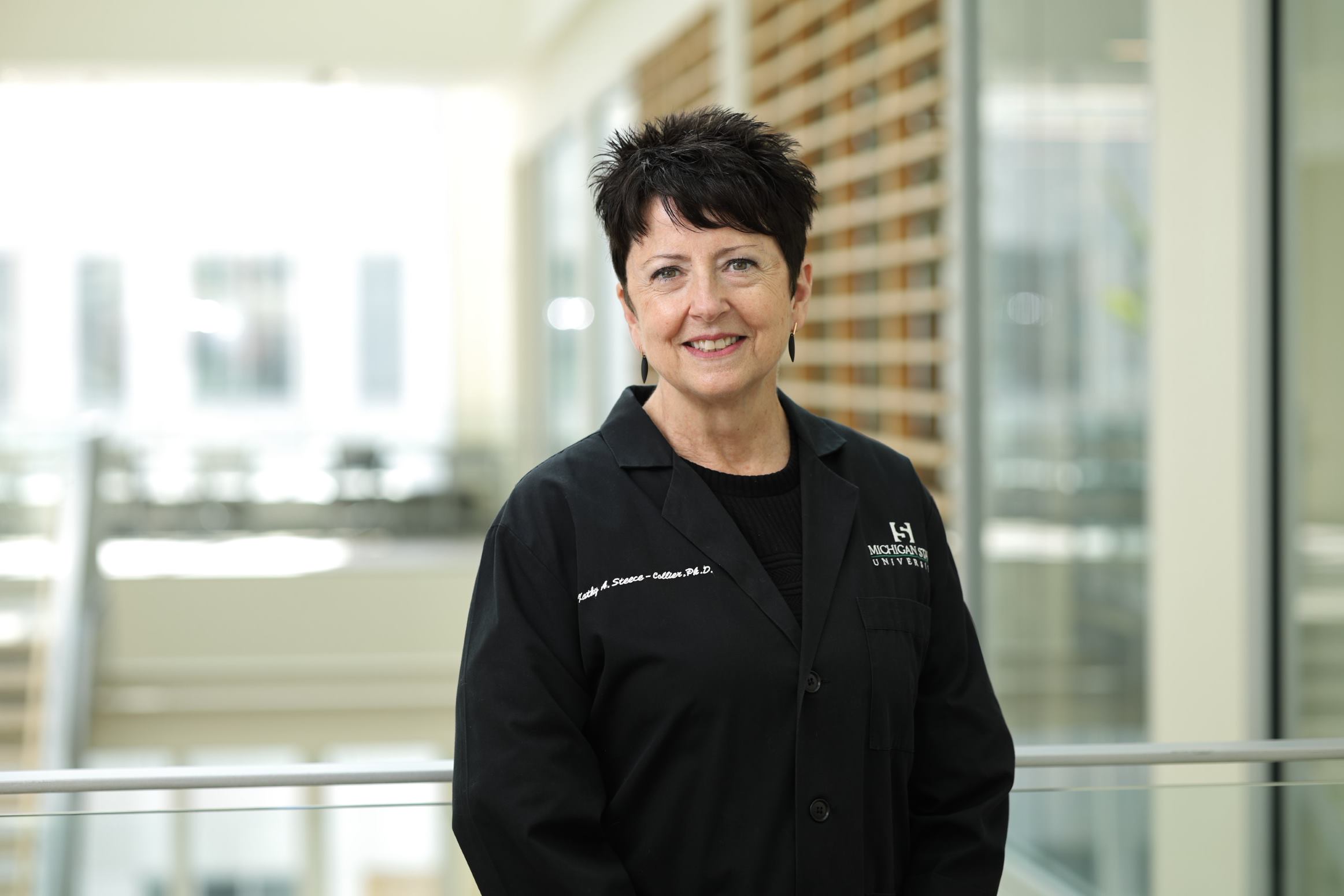MSU scientists create start-up to develop gene therapy for people with Parkinson’s disease
March 27, 2023
Built on promising work by Michigan State University scientists, MSU’s Spartan Innovation and two of the researchers have formed a company to create new treatments for neurodegenerative diseases, with a first goal of developing a gene therapy to improve care for people with Parkinson’s disease.

Kathy Steece-Collier
The new startup, CavGene Therapeutics, Inc., will further research initiated by Kathy Steece-Collier, PhD, a professor of Translational Neuroscience in the College of Human Medicine. For decades, she has led an effort to reduce or eliminate a frequent side effect of a drug commonly prescribed for Parkinson’s patients. While the drug, levodopa, can alleviate the tremors, stiffness, and other motor symptoms of Parkinson’s, long-term use can cause dyskinesia, the involuntary and uncontrolled movement of hands, the head and other body parts that can negatively impact quality of life.
Using a harmless virus to deliver genetic material into the brain appears not only to reduce existing dyskinesia but also prevent its development, the team’s federally funded studies have shown.
“I think it’s extremely promising for enhancing Parkinson’s treatment,” Steece-Collier said. “The effect on dyskinesia is the most remarkable I’ve seen, and I’ve been studying dyskinesia for 20 or 25 years.”
The team’s research focuses on cells called medium spiny neurons in an area of the brain called the striatum. Medium spiny neurons have appendages called dendrites, and each dendrite is covered with minute spines, which have receptors for dopamine, a neuro chemical necessary for normal motor behavior.
In people with Parkinson’s, the level of dopamine declines, and many of the tiny spines retract, in effect, altering brain circuits. Levodopa, a synthetic form of dopamine commonly prescribed as Sinemet, stimulates the regrowth of spines, but the new spines appear to lack the ability to form normal brain circuits.
The reason is related to an overabundance of calcium in the spines in the brains of Parkinson’s patients. Some calcium is necessary for normal functioning of brain cells, but too much kills the cells.
Research has shown that the loss of dopamine causes a calcium channel in brain cells called CaV1.3 to allow too much calcium into the spines, leading to retraction of the spines.
Image modified from “The Role of Striatal CaV1.3 Calcium channels in Therapeutics for Parkinson’s Disease” Caulfield ME, Manfredsson FP, Steece-Collier K. Handbook of Exp Pharmacol. 2023, doi: 10.1007/164_2022_629.
A couple of drugs are available that can block CaV1.3, but getting a large enough dose into the brain risks serious cardiovascular side effects.
The gene therapy her team has been working on is a better alternative without the undesirable side effects, Steece-Collier believes.
Fredric Manfredsson, PhD, a former MSU professor now at Barrow Neurological Institute in Phoenix, created a viral vector (a harmless virus stripped of its ability to reproduce) to act as a sort of Trojan horse to carry a bit of genetic material called shRNA into the striatum and turn down the production of the CaV1.3 calcium channels.
Image modified from “The Role of Striatal CaV1.3 Calcium channels in Therapeutics for Parkinson’s Disease” Caulfield ME, Manfredsson FP, Steece-Collier K. Handbook of Exp Pharmacol. 2023, doi: 10.1007/164_2022_629.
The treatment appears not only to prevent the onset of dyskinesia but reverse it, Steece-Collier said, and it seems to restore some of the motor skills typically lost due to Parkinson’s.
The new startup company, founded by Steece-Collier and Manfredsson with Spartan Innovation, is applying for a small business grant to carry the research further, specifically to develop a viral vector that is safe in human patients. That would be the next step toward clinical trials in people with Parkinson’s, likely still years away.
“We’re trying to find the safest and most effective gene therapy,” Steece-Collier said.
Although the treatment is not a cure for Parkinson’s disease, it could greatly improve the quality of life for patients by eliminating the most common side effect and potentially enhancing the therapeutic benefit of the preferred treatment, she said.

